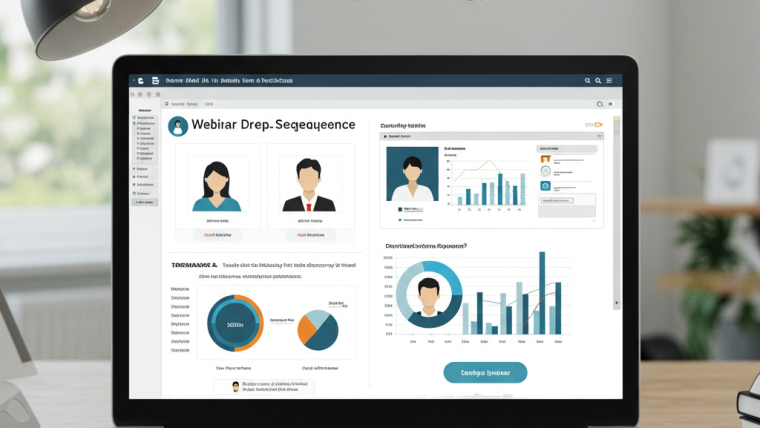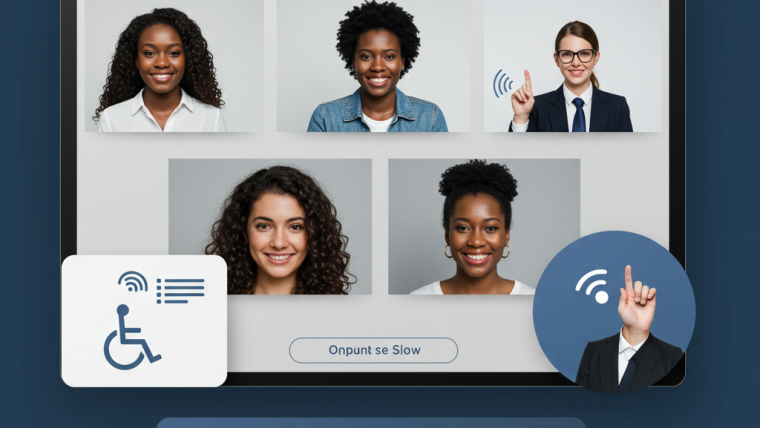In today’s digital world, webinars are essential tools for education, marketing, training, and collaboration. Whether you’re attending a company training, a virtual class, or an industry conference, you may wonder: can webinar hosts hear me during the session?
This is a common concern, especially for new participants who aren’t familiar with webinar platforms like Zoom, Microsoft Teams, Webex, or GoToWebinar. In this article, we’ll explore how audio works in webinars, when hosts can hear you, and how you can take control of your privacy during any virtual event.
Understanding How Webinars Work
Webinars are designed for one-to-many communication, typically with a host or panelist presenting while the audience listens. Unlike regular video calls or meetings, most webinars keep the audience in listen-only mode to avoid background noise and interruptions.
This means that by default, attendees’ microphones are muted—and hosts cannot hear you unless specific conditions are met.
When Can Webinar Hosts Hear You?
1. If the Host Unmutes You
Some webinar platforms allow the host to unmute individual attendees. However, this action usually:
-
Requires your permission (a pop-up will appear asking you to accept)
-
Is only done when the host wants you to speak or participate
For example, in Zoom Webinar, if the host wants to unmute you, a notification will appear on your screen, and you must click “Unmute” for your mic to turn on. Until then, the host cannot hear you.
2. If You’re in a Panelist or Presenter Role
If you are invited as a panelist, co-host, or presenter, your mic may be live or under your control. In this case, the host and other panelists can hear you if you turn on your microphone.
It’s crucial to check your mic status and mute it if you don’t want to be heard.
3. If You Join Through a Meeting Link Instead of a Webinar
Some virtual events are set up as meetings rather than webinars. In meetings, all participants usually have audio and video access unless the host mutes everyone.
If you’re unsure whether you’re in a webinar or a meeting, check your controls:
-
If you can see your own mic/video buttons, it’s likely a meeting.
-
If not, you’re probably in a listen-only webinar.
How to Ensure Your Mic Is Off
Worried about background noise or saying something by accident? Here are some quick checks:
Check the Microphone Icon
On Zoom, Teams, and similar tools, a red slash across the mic icon means you’re muted. If there’s no slash, your mic is live.
Test Your Audio Settings
Most platforms offer audio settings where you can see your current input/output devices and microphone status. Testing your mic before the webinar ensures you’re aware of what others might hear.
Close Other Communication Apps
If you’re multitasking during a webinar, apps like Skype, Slack, or Google Meet running in the background could be active. Make sure they’re closed if you want total audio privacy.
Webinar Platforms and Audio Control
Here’s how the major platforms handle attendee audio:
Zoom Webinar
-
Attendees are muted by default.
-
Hosts must request unmute; attendees must confirm.
-
Panelists can mute/unmute themselves.
Microsoft Teams Live Events
-
Attendees cannot speak unless they’re presenters.
-
Interaction is via Q&A only.
-
No one can unmute you without promotion to presenter.
Webex Events
-
Similar to Zoom, with muted attendees.
-
The host can allow unmuting, but not without consent.
Google Meet and Zoom Meetings
-
These are meeting platforms.
-
All participants can speak unless manually muted by the host.
If you’re ever unsure, check the platform’s support resources. For example, Zoom’s support page explains roles and permissions clearly.
Privacy Best Practices During Webinars
To feel confident and stay in control, follow these tips during webinars:
Use Headphones with a Mic
This helps avoid unintended background noise and keeps audio clean if you’re ever unmuted.
Disable Mic Access at the System Level
For extra safety, you can disable microphone access in your device settings during the webinar. This ensures no platform can use it, even accidentally.
Stay Aware of Notifications
If you receive a prompt to unmute or change your status, read it carefully. Don’t click “Unmute” unless you’re ready to speak.
Common Myths About Webinar Audio
Let’s address a few common misconceptions:
“The host can hear everything I say.”
False. In a standard webinar, your mic is off by default. Hosts cannot listen in without your permission.
“My mic could be secretly turned on.”
Not true. All major platforms require your explicit consent to enable your mic. Hosts are not allowed to force audio access without notifying you.
“If I’m watching a recorded webinar, the host can still hear me.”
Definitely false. Recorded webinars are one-way and passive. No audio can be captured from the viewer’s side.
Why This Matters for Attendees
Knowing the answer to can webinar hosts hear me puts you in control. It helps you:
-
Avoid embarrassing situations
-
Participate confidently
-
Manage your privacy and surroundings
Whether you’re attending a business seminar, an online class, or a public event, this understanding ensures a smoother experience.
If you’re interested in mastering webinar tools or producing your own, you can explore more through platforms like LivecastHub, which offers insights and solutions for webinar hosting and virtual events.
Final Thoughts
The simple answer is no—webinar hosts cannot hear you unless you actively unmute yourself or are given permission and accept it. Modern webinar platforms are designed with user privacy in mind, and you remain in control of your microphone throughout the event.
Still, it’s always smart to stay aware of your settings and know what platform you’re using. If you’re cautious and follow basic privacy tips, you’ll never have to worry about being overheard in a webinar again.
Would you like to explore how to host a secure webinar or build your own event platform? Visit our homepage to learn more.








Webinar Analytics: A Complete Guide to Measuring Success and Improving Performance
The Ultimate Webinar Follow-Up Strategy to Turn Attendees into Customers
Webinar Accessibility Best Practices: How to Make Your Online Events Inclusive for All
Webinar Personalization: Tailoring Content to Audience Segments for Maximum Engagement